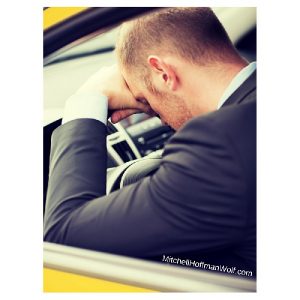Even if you have not yet been a passenger, it is likely you have heard of ridesharing services like Uber, Lyft and Sidecar. To many individuals, these services are seen as a great benefit of the “sharing economy”, whether it is because of the convenience as a passenger, or the income potential as a driver.
As we’ve seen with many technology advancements, regulation moves much more slowly than the apps and services delivered by these technologies. Inevitably motor vehicles accidents causing personal injuries are bound to happen, giving rise to the question of “Who is responsible when a driver working with a ridesharing service gets into an accident?”
The typical automobile insurance policy contains a “public or livery conveyance” exclusion, which will typically preclude coverage for private individuals transporting people for a fee. This means that if your driver did not pay for a commercial liability policy, his auto insurer will not provide coverage for the accident. It is highly unlikely that most drivers with ridesharing services will obtain commercial liability insurance to fill this gap, as they are unaware of the exclusion and may find it is simply not cost effective. These insurance coverage issues should concern you as a potential driver, passenger, or even another driver on the road.
Further complicating matters are the varying fact patterns which may exist involving drivers with ride sharing services. Let’s consider the following scenarios
Period 0: The driver gets into an accident in his or her car, but the app is not enabled. During this time, the driver is only covered by his or her own personal auto policy.
Period 1: The driver has the app (or apps) enabled, but has not yet picked up or accepted a passenger and gets into an accident. This has become one of the most disputed area when it comes to accidents, regarding insurance companies taking responsibility for the claim.
Period 2: The driver has accepted a ride request, and is en route to pick up the passenger when an accident occurs. This is another problematic area were insurers have tried to avoid offering coverage to accident victims
Period 3: The driver has a passenger (or passengers) in the vehicle. In this instance only a driver with a commercial policy will be covered.
The ride sharing insurance gap became a hot topic earlier in the year when an UberX driver in San Francisco struck an entire family, killing their 6 year-old daughter. The family filed a wrongful death lawsuit against Uber, Uber denied any liability, stating that the driver didn’t have a passenger in his vehicle when the accident took place.
Ridesharing services also take the position that the drivers are not their employees and simply independent contractors for whose conduct they are not responsible. It will be interesting to see how courts respond to these arguments in the coming months and years.
Find out what kind of local or state regulations are in place for ride sharing services in your community. Should you find yourself injured in an accident, and have any questions please call one of the experienced personal injury attorneys at Mitchell, Hoffman and Wolf. Our team has handled numerous cases against taxi cabs, limousines, buses and other commercial carriers with great success over the years.

